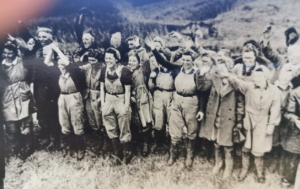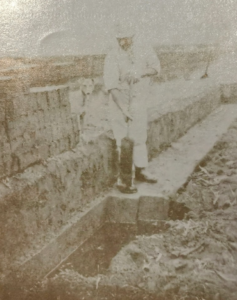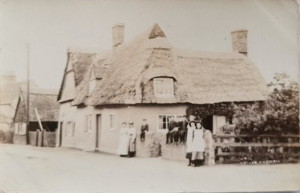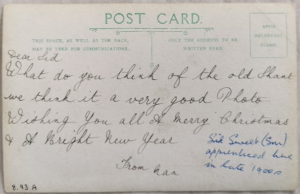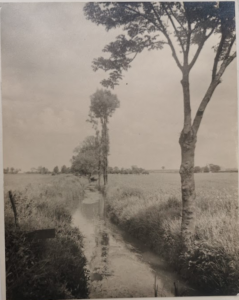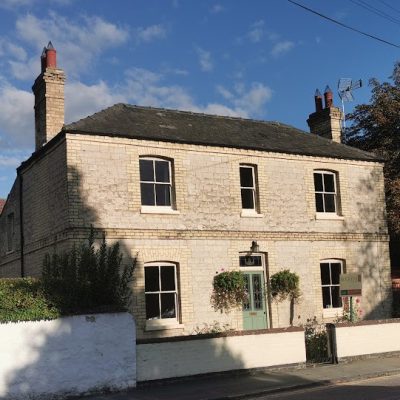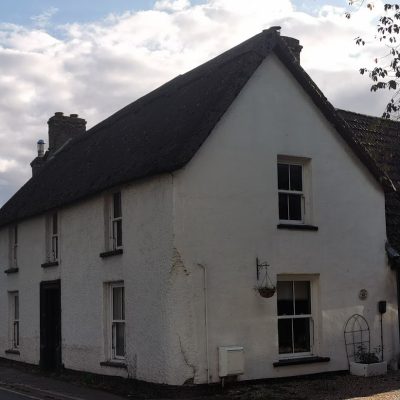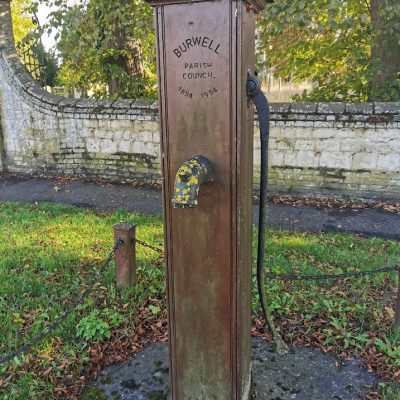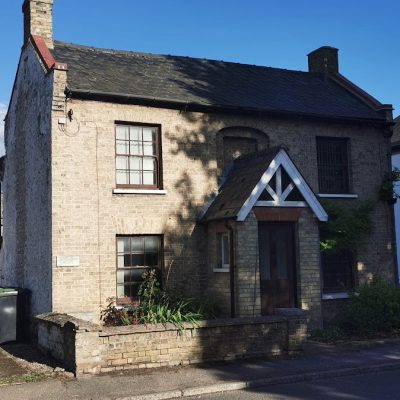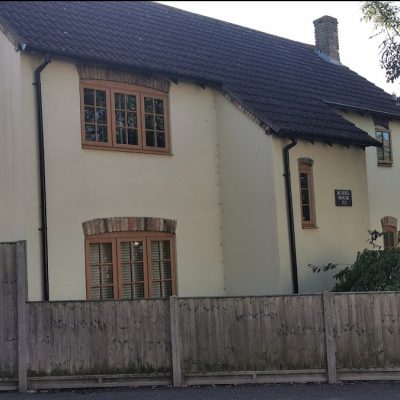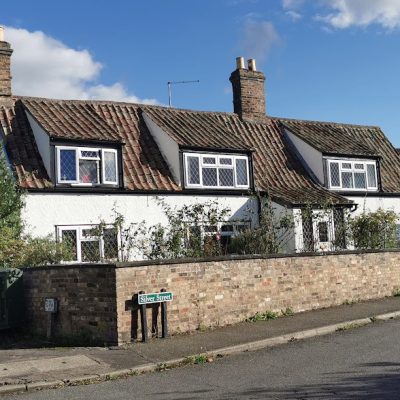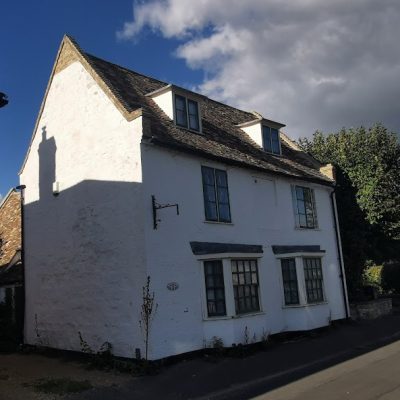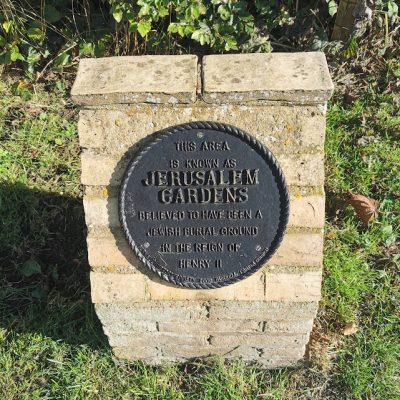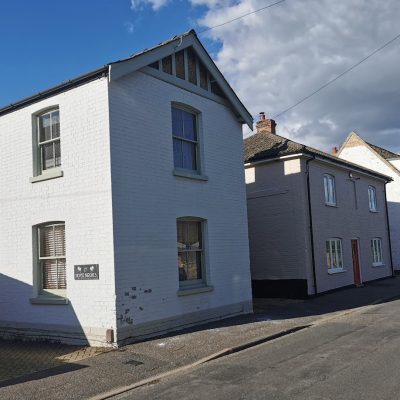Search by topic
- archaeology
- architecture
- bricklayer
- Building of Local Interest
- carpenter
- church
- crime
- dressmaker
- fire
- Great Eastern Railway
- listed building
- medieval
- oral history
- Public House
- Rattee & Kett
- Religious House
- Roman
- scholar
- school
- Then and Now
- tudor
- women
- work
- world war one
- world war two
Search by text
 King and Queen visiting Land Girls in Burwell in 1940 (Cambridgeshire Collection)
King and Queen visiting Land Girls in Burwell in 1940 (Cambridgeshire Collection)Burwell Data
Mike Petty's Burwell Scrapbook
The 2024 CAS Proceedings includes a useful over view of Burwell history:
https://www.camantsoc.org/wp-content/uploads/2024/08/PCAS2024_WebSummaries.pdf
1071
Burwell was burnt by followers of Hereward the Wake (Liber Eliensis)
1086
Domesday records 42 households.
1277
Permission for a market ‘at the manor’ granted to Robert Tybotot
c.1350:
Development along North Street is first recorded.
Burwell Chronicles: 26/8/1814 Burwell Peace festival celebrated on the Prince Regent’s Birthday. Napoleon had abdicated in March and been exiled to Elba.
Burwell Chronclee, 1851 – 1852: Considerable unrest is described over legislation that was understood to be undermining the traditional use of the Burwell Fens by poor men of the area. In March the military were called out from Newmarket. Seventeen ringleaders were arrested and taken to Cambridge; some pleaded that they had not fully understood the legal changes over ownership of the land and they were released with no charge. Four however the taken to Cambridge County gaol.
1852 the river burst its bank leaving 2,000 acres under water. This led to large numbers of workers migrating to the USA and Australia.
Burwell Chronicle, 1853: February, reported that upwards of 40 persons had left the village for Australia. Public meetings were held to encourage migration.
Ephraim Gray, 25, wife Lucy, 26, and two young children emigrated on ‘The Admiral Boxer’ and settled in Victoria, Australia, in 1854.
Burwell and Reach were the main centres for the cutting of peat which was used for fuel.
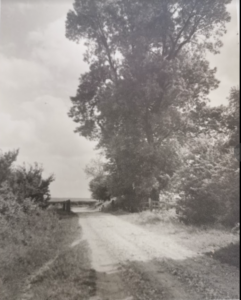
Near Burwell by Reginald Bellamy (MoC124/57)
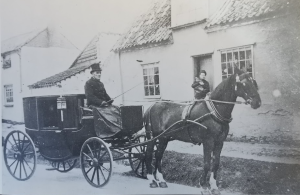
Joe Rule & brougham of William Ambrose outside his house, Lower High Street, Burwell c.1910 – location unknown
1862 A Burwell Alphabet
Described in Tales of Old Cambridgeshire nu Polly Howat, 1990,the source for this is unpublished Village Notebooks compiled by Enid Porter. The alphabet pokes fun at the occupants of Burwell:
A was an Anderson, lazy and slow. [Isaac Anderson. One of the cricket team, good but slack fielder]
B was Tom Ball and Richard the Co. [Mr T T Ball, chemical manure manufacturer who has recently taken his brother Richard in partnership and was known by his friends as ‘The Co.’
C were the Casburns of whom there are flocks. [Casburns were numerous in the village]
D was a Danby who lived at the Fox. [William Danby who kept the Fox Inn in the village where meetings, sales and public dinners were held.]
E was Miss Eastwell whom Martin did charm her. [Miss Eastwell was greatly admired by William Martin the carpenter]
F was a Fuller who once was a farmer. [Will Fuller who sold his land to Thomas Lucas]
G was a Gardiner, a builder not quick. [Mr Gardiner. A good builder and contractor but thought to be slow]
H was a Hunt, a layer of brick. [John Hunt. Master craftsman in brick-laying]
I was an innkeeper, John Carter they call. [John Carter. A brewer, maltster and proprietor of the White Horse. Considered to be a good judge of horseflesh and well-known by dealers who stayed at his house for Reach Fair.]
J was Tom Johnson of Tunbridge and Hall. [Thomas Johnson. Lived at the Hall and was a frequent visitor at the Tunbridge Inn and was thought to be a representative of both houses.]
K was Joe Kent who of draughts took enough. [Joe Kent. Wealthy farmer of Swaffham Prior who suffered from nerves. He liked to see his doctor each morning and took four draughts of medicine daily.]
L was a Lucas, a taker of snuff. [Thomas Lucas. Snuff taker. he owned a box with a polished Scottish pebble set in silver.]
M was a Mingay, whose bus was his life. [Henry Mingay. He was a thrifty yeoman farmer who had a carrier’s cart and drove a bus named ‘Perseverance.’ A cheery fellow.]
N was Jack Nichols, chastising his wife. [Jack Nicholas. The pork butcher who loved strong ale and beat his wife when he got drunk.]
O was an Oliver, a grinder of flour. [Oliver Carter. Stout old miller, wore a white hat and brought grist to his mill in a yellow cart with red shafts and wheels]
P was John Peachey, right High Chancellor. [John Peachey. A big old man who once appeared, with others, at a London law court on a charge of not paying his lawful dues on his farmland. The knowledge of layers and the law that he acquired there was vast. When he was excited his gesticulations were so violent that he was given the name ‘Lord Chancellor’.]
Q was a query if Fielder was right. [Mr Fielder, Graduate of Jesus College, Cambridge, used to spend months together at the Five Miles From Anywhere Inn at Upware and from the inn’s patrons formed a republic and made himself president. His satirical remarks on some of the Fen magnates made them question if he were in his right mind.]
R was a rubicund, joyous and bright. [Rubicund Mr Bob Peachey. ‘ Bustling old stock,’ a jobber with a smile and cherry word.]
S was a stays, and artist self made. [Will Peachey. The village fop, reputed to have worn stays. he was infatuated with a lady and used to paint her portrait and put it in her summerhouse.]
T was a Turner by name and by trade. [Will Turner. Clever manipulator of words. he often said, ‘I never go to church when there is a gathering. I don’t hold with the University taking £6,000 a year out of the parish without paying all dues and demands.]
U was an umpire, who never was wrong. [Bill Dunn. His knowledge of cricket was very limited. He was an umpire who would never admit that he gave a wrong ruling.]
V was a vicar, both hearty and strong. [The Reverend Crockholt. A man of great energy and endurance. he restored the church, built schools and did much for young people.]
W was Sweet William whose surname was Dunn. [Mr Will Dunn. His brown rubicund and gnarled face suggested the Sweet William flower as it faded.]
X the expense attending his fund. [Mr Dunn. The treasurer of the cricket club, whose won expenses in collecting the subscriptions had to be considered.]
Y were the youths of Burwell, far famed. [Youths of Burwell. More harmless fun of Burwell celebrities.]
Z we leave for want of a name.
Mike Petty’s Burwell Scrapbook:
https://archive.org/details/BurwellScrapbook1897To1990
Contribute
Do you have any information about the people or places in this article? If so, then please let us know using the Contact page or by emailing capturingcambridge@
License
This work is licensed under CC BY-NC-SA 4.0








